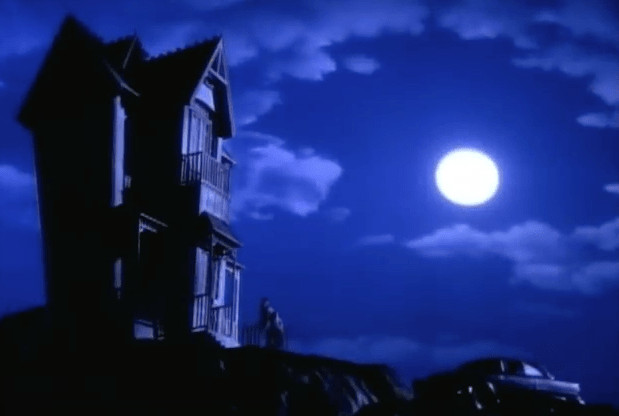When the scene unfolds – a man solemnly carrying a lifeless body down the steps of a gothic mansion – it’s an image that etches itself into memory. For many, this chilling yet captivating visual is the introduction to “Mary Jane’s Last Dance”, the renowned song by Tom Petty and The Heartbreakers. Released in 1993 as part of their Greatest Hits album, the song quickly became iconic, not just for its music, but for its unforgettable music video. This exploration delves into the depths of “Mary Jane’s Last Dance,” dissecting its haunting video, lyrical ambiguity, and enduring impact on music culture.
 Tom Petty in Mary Jane's Last Dance music video, carrying Kim Basinger as a corpse, highlighting the song's dark and cinematic visuals.
Tom Petty in Mary Jane's Last Dance music video, carrying Kim Basinger as a corpse, highlighting the song's dark and cinematic visuals.
A Haunting Visual Introduction to Music
For a generation discovering music through MTV in its prime, the “Mary Jane’s Last Dance” video was a defining moment. The music television network, then a powerful tastemaker, showcased the video’s cinematic narrative, directed by Keir McFarlane. The visuals immediately set a tone of macabre beauty, reminiscent of horror films with cool, muted colors and a palpable sense of unease. The opening scene itself is striking: Tom Petty portraying a mortician, tenderly carrying a deceased woman, played by the actress Kim Basinger. This imagery, both unsettling and strangely beautiful, ensured the video’s lasting impression. Set against the backdrop of a gothic-style home, the video’s aesthetic leaned into a Beetlejuice or Texas Chainsaw Massacre mood, blending dark humor with a gothic sensibility that captivated audiences.
Decoding the “Mary Jane’s Last Dance” Music Video Narrative
The video unfolds as a series of vignettes depicting the mortician’s attempts to relive moments with his departed lover. Scenes of him adorning Basinger’s body in a wedding dress, positioning her at a formal dining table with vibrant red lipstick, and ultimately carrying her to the ocean’s edge to release her into the waves, paint a picture of a man grappling with loss. Kim Basinger herself described the experience as “one of the coolest things I’ve ever done,” highlighting the video’s unique and classic feel. She recounted the challenge of remaining motionless and “weightless” in Petty’s arms, emphasizing the dedication to creating the video’s impactful imagery. This visual story, open to interpretation, adds layers to the song’s already enigmatic lyrics.
“Indiana Girl” to “Mary Jane’s Last Dance”: Unraveling the Song’s Meaning
Lyrically, “Mary Jane’s Last Dance” presents a similar ambiguity. Originally conceived as “Indiana Girl,” the song evolved in the studio with producer Rick Rubin. While verses retain the “Indiana girl on an Indiana night” imagery, the chorus took on a “deeper meaning,” as Heartbreakers guitarist Mike Campbell explained. This shift introduced the “Mary Jane” reference, leading to widespread speculation about the song’s true subject. Is “Mary Jane” a metaphor for marijuana, as hinted at by the line “One more time to kill the pain?” Or is it simply a farewell to a past love, a “goodbye love song” as Campbell suggests? Petty himself remained elusive about a definitive interpretation, adding to the song’s mystique and allowing listeners to connect with it on personal levels. The lyrics, telling of a free-spirited woman who “got to keep movin’ on,” resonate with themes of love, loss, and the bittersweet nature of relationships.
Critical Acclaim and Cultural Impact
The impact of “Mary Jane’s Last Dance” extended beyond its airplay. The music video garnered significant recognition, winning the MTV Video Music Award for Best Male Video in 1994. This accolade solidified its place in pop culture history, triumphing over videos from other music icons like Beck, Tony Bennett, and Bruce Springsteen. Beyond awards, the song and its video embedded themselves in the collective memory of a generation. For many, it was an introduction not just to Tom Petty’s music, but to the power of music videos as a storytelling medium. The song’s haunting melody and evocative visuals continue to resonate, ensuring “Mary Jane’s Last Dance” remains a timeless classic, forever linked to its iconic and unforgettable music video.

